How to do the Mid Atlantic 12/24 Endurance Race (and a race report)
August 20, 2018/ Maria Parker
This was supposed to be the year of no racing. Months ago, however, my friend Doug Kline asked if I would be willing to do the Mid-Atlantic 24 hour with him as a team. Doug is a customer who has become a good friend and the idea of doing a 24-hour event as a team with him sounded almost like fun. I told Doug I’d only do it if I didn’t have to train for it and if we did it “just for fun.” He agreed.
What I didn’t know was how easy it would be to do an event with Doug. He made all the arrangements, communicated clearly about what the event would be like and, turned out to be a tough competitor in the face of heat and rain, wind and pain. In addition, he drove all the way down to my house for some really fun long training rides.
The pre-race e-mails and forum posts from Doug and Jeffrey Ritter (who also raced) are just too informative to be lost in archived cyberspace. For those who want to do the Mid-Atlantic or any endurance race, there is much to be learned below. All information is thanks to Doug Kline and Jeffrey Ritter.
Mid Atlantic 12/24 How to
Event date and time and location:
Usually, it’s the third Saturday in August. Set-up Time: 5 am, 7 am race start (7:30 for 100). The location is the Washington High School bus loop: 400 Slatestone Road, Washington, NC. The start and finish go up the driveway the bus driveway. You will ride your bike clockwise around the loop such that bikes are not crossing paths. That means you are driving on the left side of the road in the school. Notice the location of the timing stand and the bathroom. The bathroom is a walk through the woods to the track. This year the bathroom in the gym was also open (large white-roofed building). This was also terrific for cooling off and getting out of the rain.
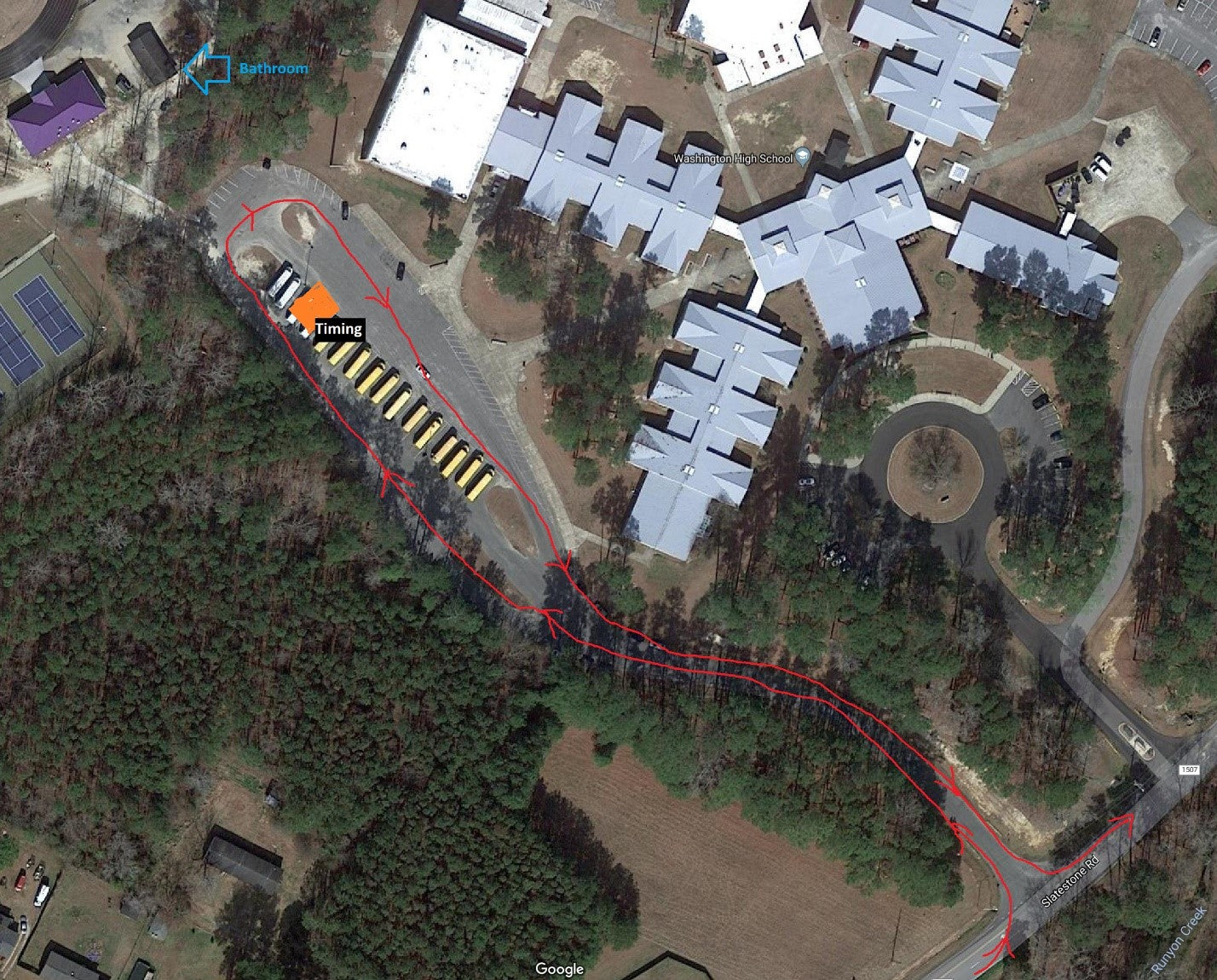
Accommodations
Not necessary but sure was nice to have a place to sleep the night before and shower later. Also, some might like a mid-race nap. Hotels: Hampton Inn, 2085 W 15th St, Washington, NC 27889, now there is a Fairfield Inn right across the street.
Basic Stuff for when you are not riding
Remember to bring chairs, water, ice, food, and other supplies. Make sure you bring plenty of water and ice. Did I mention ice? It is August. The best place to buy large bags of cheap ice is Twice-the-Ice kiosk in front of the Food Lion. Big bags cheap. We also had a pop-up 10 by 10 tent. It provided terrific shade.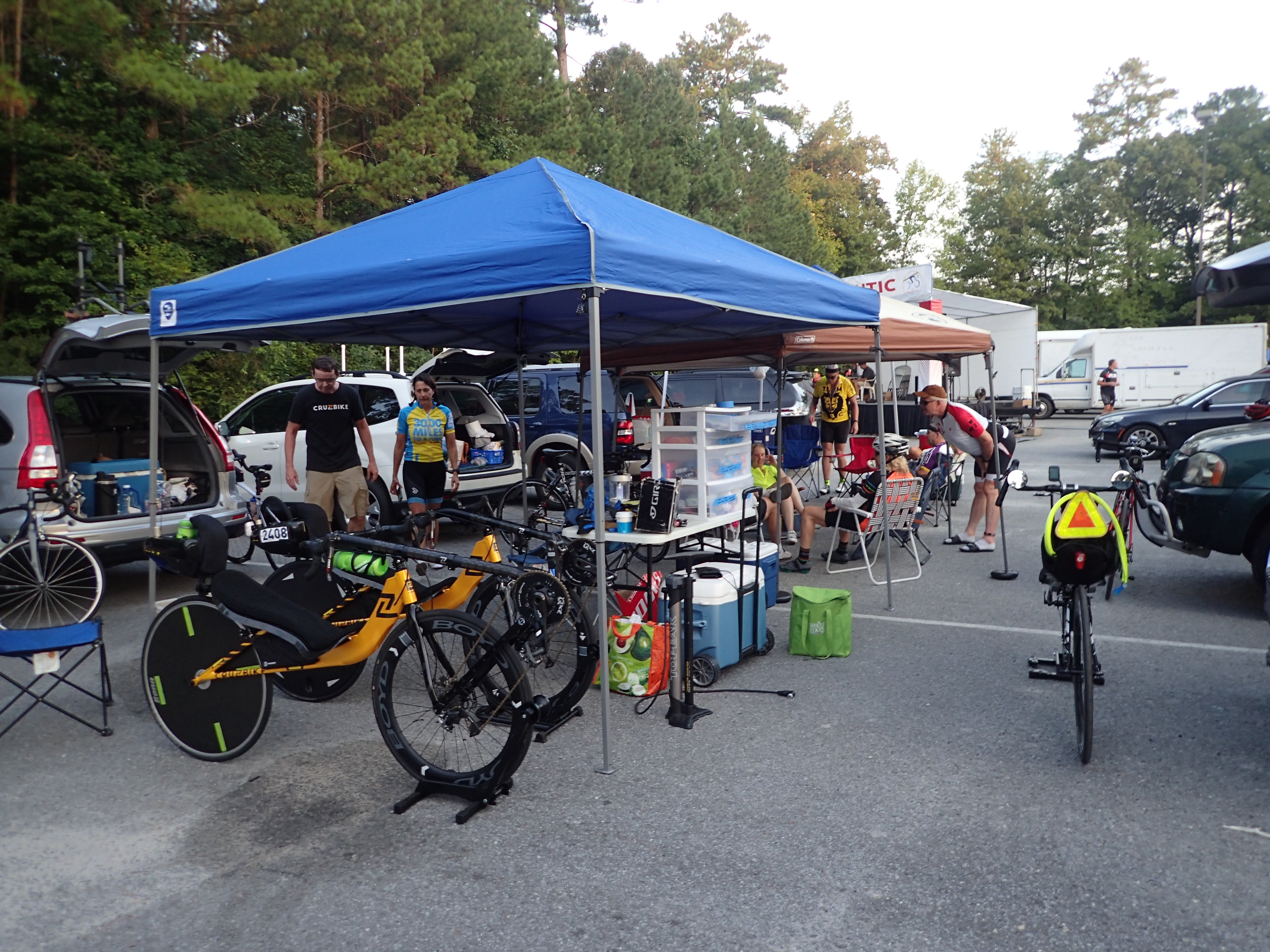
Staying Cool
One neat trick is to take old stockings, fill them w/ice and tie off the ends. They drape around your neck to cool your body temp nicely and, when the ice is gone, you don’t have a warm, soggy towel weighing you down. Prepare a bunch in advance if you are self-supporting. Also, consider arm and leg stockings that are SPF graded, like these. We also learned that if you pour water inside the stockings, it also is very cooling. But, don’t fail to put waterproof SPF on everywhere–for recumbents, that is especially important on your chest.
Food
There is a ton of learning and options, but the key is to try and make sure whatever you eat you will be able to hold down during exertion and/or avoid gastro-discomfort. In other words, test your menu before the event! I do fine with what I consume–hand-made nut and fruit balls, bananas, sweet potato, and gels–but those may not work for you!
Route
This is the 26-mile loop. It goes back to your car at the high school. Is very flat. Here it is on Ride with GPS https://ridewithgps.com/routes/28351681
Safety
While the 100-mile race is going on, the left turns and road crossing will be protected by police officers. After the 100-mile race, you must follow the rules of the road and that left turn out of the HS is a bit hard to see oncoming cars.
Sunset is 7:54 pm. If you’re riding past sunset you must be properly equipped.
1) A headlamp that has enough throw for the speed you’re riding. Two loops will take about 3 hours so most commuter lights would be sufficient. You should also have a backup headlamp.
2) A solid (not flashing) tail lamp. Multiple are better. These must be bright enough to be seen from a good distance.
3) Reflective vest and ankle bands. They don’t have to be fancy cycling versions. You can find them at hardware stores and Amazon has a ton of them.
Randonneur guide: https://rusa.org/reflectivity/
Bicycle Equipment for night riding
1) 700 lumen Nitecore SRT5 LED Flashlight with replaceable batteries. These are discontinued but there are other great flashlights available. The advantage of a flashlight over a cycling specific light is you can use it for many uses and can have spare batteries.
2) TwoFish Flashlight holder:
3) Niterider Solas taillight:
4) Cateye Rapid X2 taillights for the seat stays: and the base for them.
5) Light and Motion Helmet light. I still have these from years of bike commuting and I really like a helmet light for night riding. I bought a new Vis 360 Pro version for the 600km randonneur ride I did earlier this year. I’m not thrilled with the Pro version, the discontinued Vis 360 Plus has a much better rear light. But the Pro does have a lockout feature and a longer run time.
6) Reflective Vest. I used this one with the randonneur rides. I can probably use it instead of a jersey on hot nights. There are a lot of other choices online.
Thanks again to Doug and Jeffrey for your thoughtful planning and sharing.
Race Report
Doug’s race report is below. I will only add that it was another great year to participate in Alvin Maxwell’s terrific event. I enjoyed seeing Cruzbike community as well as other Ultra Cycling friends.
In addition to all the planning and organizing, Doug trained more, did more miles and did them faster. I had fun despite my usual stomach issues and completed most of 6 laps (one was shortened by about 5 miles because of a flat) for a total of 152 miles. I mostly kept my speed above 20 mph. It was terrific to have some really strong competition in the two-person team category in the Nancy and John Guth and Marc Poland and Carol Beliveau. I got to chat a little with Carol Beliveau who was pushing 180 watts to my 130 on her upright. I tried to talk her into riding a Cruzbike.
When Doug told me his knee was hurting him and he was worried it would be dangerous to continue, I smiled and told him I was delighted to go back to the hotel and sleep off the rest of the rainy night. That pillow felt so good. Congratulations to Carol and Marc for riding tough to the win.
As usual, I’m grateful to all of my friends who raced and supported.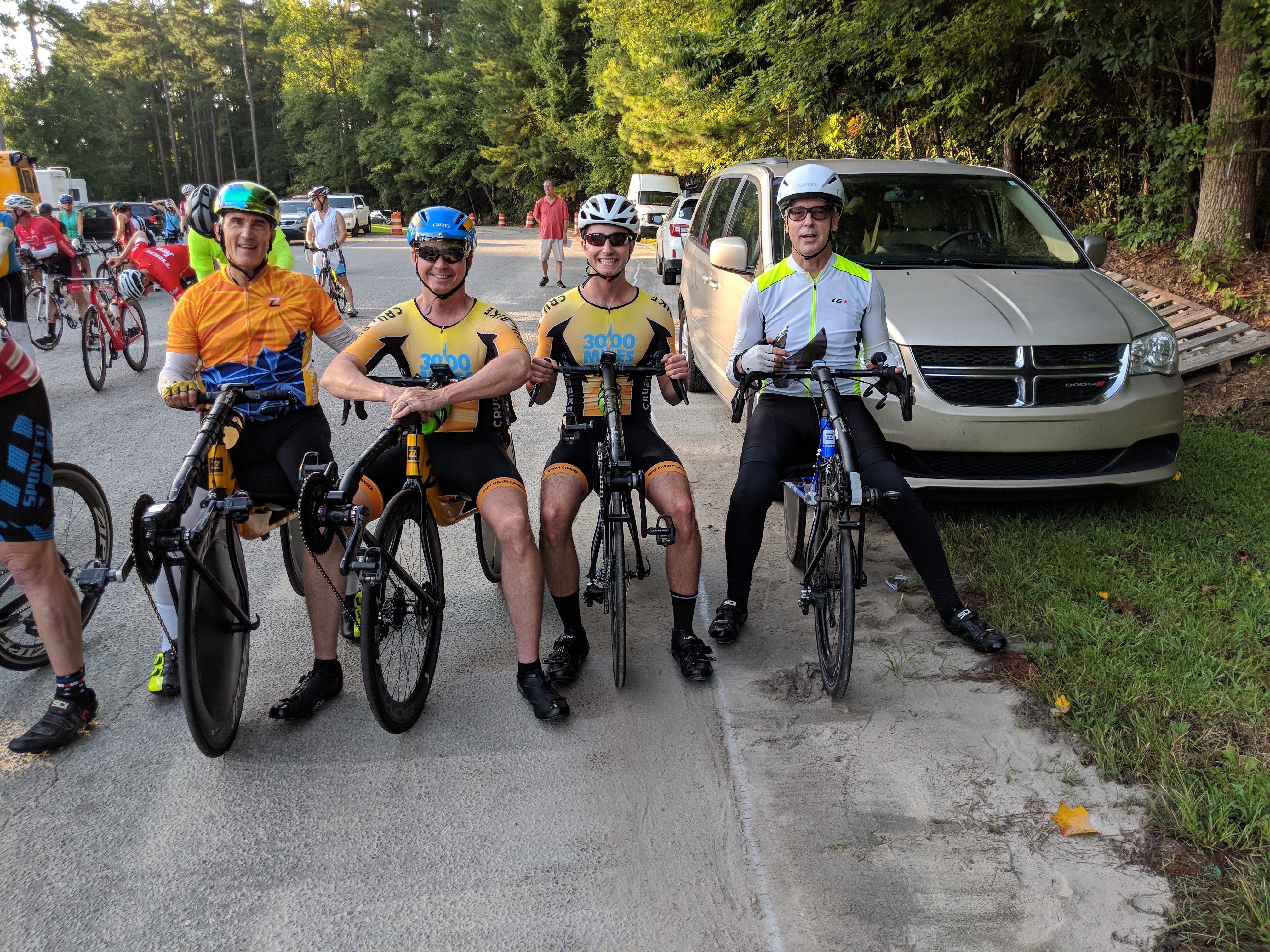
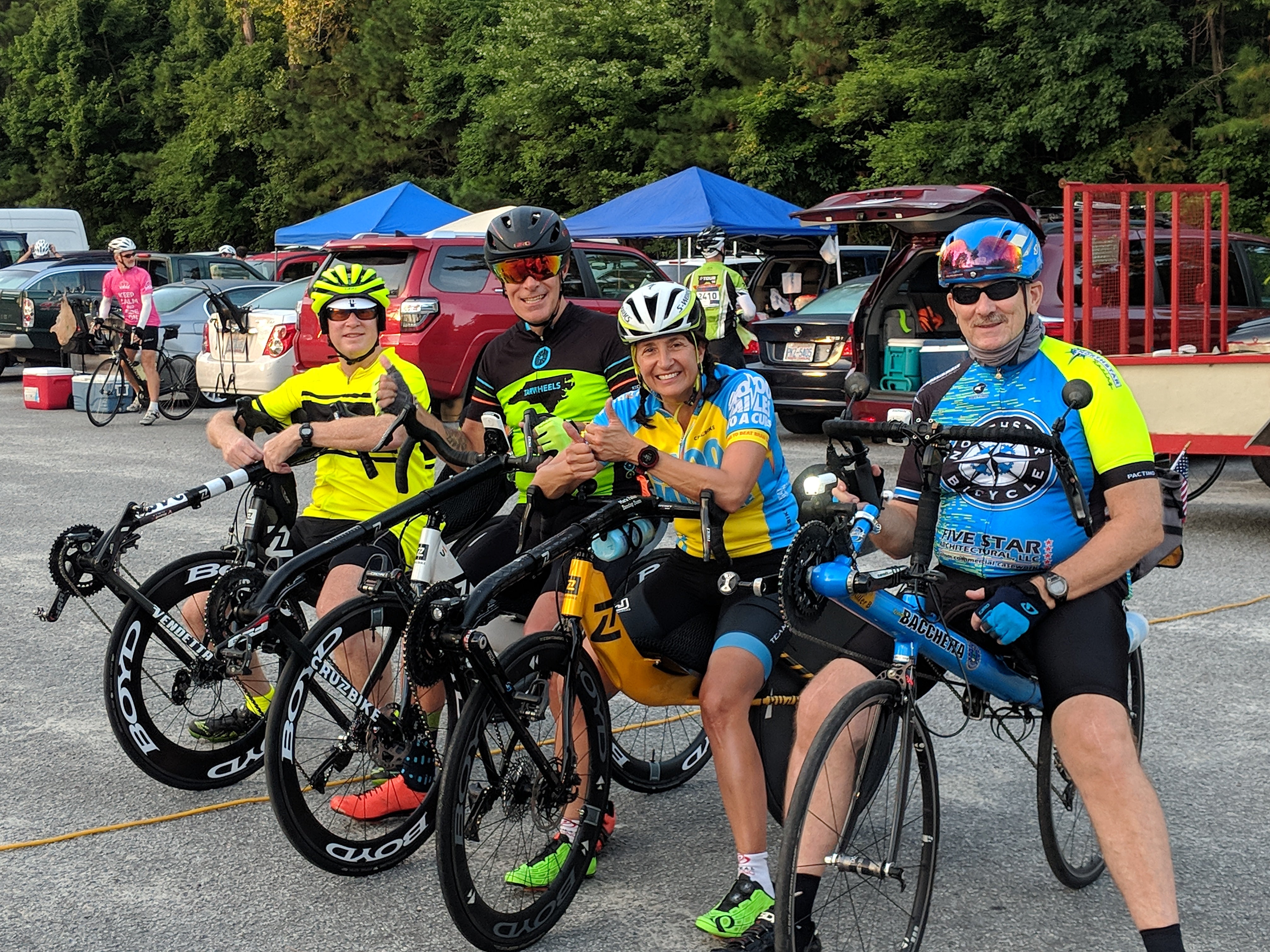
Doug’s Race Report
I had a great race and a great time with the Parkers. The 2-person relay competition was formidable. John and Nancy Guth are legends in the sport. They had beaten me by a lot 3 years ago on my DF. And Marc Poland and Carol Beliveau from the RRT4G Ultra Cycling racing team. Both Marc and Carol did quite well in Sebring last winter among other accolades.
Marc was my main competition and he motivated me to go as fast as I did. Maria would put some time on Carol and then Marc would have to chase me down. I could see him coming in my 80mm B&M mirrors from afar and did all I could to hold him off. He is a much better athlete, but lucky for me he chose his bike poorly for this course. He lives in the mountains and invited me to come over and ride with him. Now he would dominate me in mountains, but I do OK on a flat course.
For a cheeky comparison, Jim did his drafting century at 23.7 mph and “Team 3000 Miles to a Cure” did our first non-drafting century at 21.6 mph.
The course is officially 26 miles, but actually about 25.7 miles, so you’ll see some variation from official records vs Strava records. It’s a very nice route, but about 2 miles of it are on the shoulder of a highway which had a fair amount of debris.
The men on all 3 teams did the 1st loop and the ladies did the 2nd loop. And we continued alternating. On the 6th loop, Maria got a flat on the shoulder of the highway. She was running tubeless on the front wheel, but unfortunately, the rear disc wheel was tubed. So, they drove me out on the course where she was, and we got our race going again. Unfortunately, we lost our lead time, but Maria tied it back up on her next run.
On loop 10 while the ladies were out on the course a thunderstorm came in and they attempted to suspend the race. Not such an easy thing to do. The ladies managed to find a barn to shelter in until the lightning passed and then rode in, but the race was still held for a while.
It was still raining on the 11th loop, which made it darker. Marc and I just rode the loop side by side sharing our lights. This gave us a chance to chat a bit. It’s always nice to meet these incredible athletes. And it was also nice not to push that loop as my knee was getting painful.
When we started the 13th loop, I was in general feeling good. I had managed my hydration and nutrition well through the day and had plenty of energy, but my knee was very painful. I was on an antibiotic called ciprofloxacin which came with a warning against vigorous exercise. I was hoping that just meant things like running or basketball. When my knee continued to scream, all I could think about was that the drug was associated with tendinitis, sudden tendon ruptures, and permanent damage. I reached a point that I just had to let Marc go and resign to the fact that I was done. Even though it was hard, I have to admit I really enjoyed racing against Marc, you know, given that Maria kept giving me a head start.
In the end I had 186 miles before abandoning the race and the team had 338 miles. That fell short of my goal, but it was respectable.


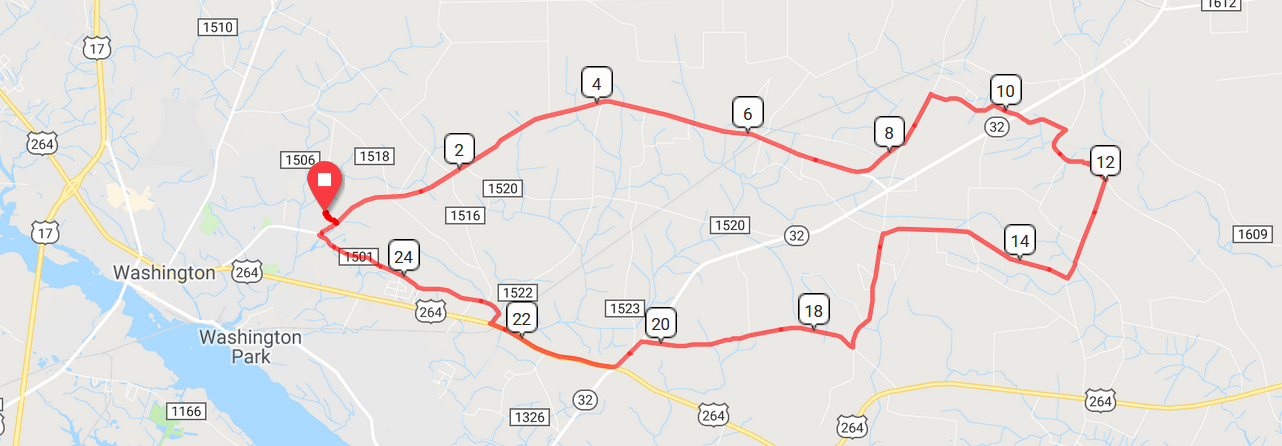
Leave a comment